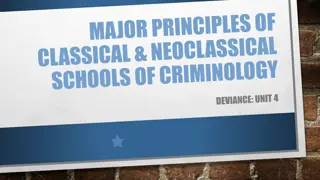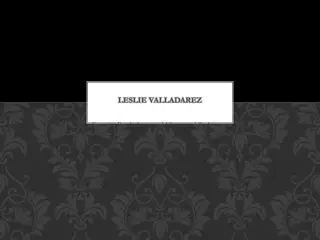Role of Forensic Science in Criminal Justice System
Explore the evolution of forensic science, legal aspects, and its vital role in criminal investigations. Topics covered include definitions of forensic science and criminalistics, historical development, Locard's Exchange Principle, CSI Effect, admissibility of scientific evidence, and the impact of precedent cases on expert testimony.
Download Presentation

Please find below an Image/Link to download the presentation.
The content on the website is provided AS IS for your information and personal use only. It may not be sold, licensed, or shared on other websites without obtaining consent from the author. Download presentation by click this link. If you encounter any issues during the download, it is possible that the publisher has removed the file from their server.
E N D
Presentation Transcript
Chapter 1 Introduction, Historic Development, and Legal Roles of Forensic Science
Learning Goals and Objectives Today, the role of science in the courtroom is undisputed. We rely upon the scientific analysis and interpretation of key evidence to both exonerate and convict. But this hasn t always been true in history. In this chapter an introduction to the role that forensic science has and does play in criminal justice is presented. Also, the legal underpinnings of the admissibility, use, and limitations of scientific evidence and testimony are explored. In this chapter, you will need to understand the following concepts: CHE 1132
Learning Goals and Objectives What is meant by the terms forensic science and criminalistics What is the difference between a basic and an applied science What is the relationship between the law, basic science and applied science How has forensic science developed throughout history to its present state What is Locard s Exchange Principle How has fiction contributed to the development of forensic science What features do fictional detectives and modern forensic scientists have in common CHE 1133
Learning Goals and Objectives What is the CSI Effect and how has it influenced scientific evidence in the courtroom What is meant by the Principle of Individuality How do precedent cases pave the way for scientific evidence and testimony What are the key features of the Frye and Daubert cases How have the Joiner, Khumo and Melendez-Dias cases affected expert testimony. CHE 1134
Forensic Science Forensic Science - Application of the scientific method and techniques to law and criminal justice. Lies at the point of convergence between our legal and scientific systems The Law wants certainty The Science can only establish the simplest of fact Encompasses many fields... CHE 1135
Forensic Science Natural Sci: Bio Physical Sci. Chem, Phys Medicine Forensic Science Social Sci.: Psyc., Anth. Engr Law and Enforcement CHE 1136
Scientific Evidence in Court Scientific (Forensic) evidence is aimed at informing the court where it lacks expertise. Assist in determining fact. What is admissible evidence? Real Science vs Pseudo (Quack) Science Established how to determine the difference through 4 primary cases (Frye, Daubert, Joiner, and Kuhmo) CHE 1137
Forensics in Court The Jury Decides How does a lay jury sort out real science from pseudo science? Until 1923 individual courts could define what was acceptable as evidence in the courtroom. Charisma Ability to convince the jury CHE 1138
Forensics in Court Frye Standard 1923, polygraph evidence the evidential force of the principle must be recognized, and while the courts will go a long way in admitting expert testimony deduced from well- recognized scientific principle or discovery, the thing from which the deduction is made must be sufficiently established to have gained general acceptance in the particular field in which it belongs . Sets up the scientific field as the validator for legal admissibility while court determines if principles are generally accepted . CHE 1139
Forensics in Court What is general acceptability? Technique must be accepted by a meaningful segment of the relevant scientific community through Books Papers Prior judicial decisions Length of existence of technique Inflexible (and slow) for new developments or extensions of existing techniques and methods
Forensics in Court Daubert case 1993, Birth defects were caused by prenatal ingestion of Bendectin made by Merrill Dow. The District Court granted Dow summary judgment based on expert testimony that said that maternal use of Bendectin had not been shown to be a risk factor for human birth defects. Although Daubert had the testimony of eight other experts who based their conclusions that Bendectin can cause birth defects on animal studies, chemical structure analyses, and the unpublished "reanalysis" of human statistical studies, the court determined that this evidence did not meet the applicable "general acceptance" standard for the admission of expert testimony. The Court of Appeals agreed and affirmed, citing Frye. Supreme Court - The Federal Rules of Evidence, not Frye, provide the standard for admitting expert scientific testimony in a federal trial. CHE 11311
Forensics in Court What are the Federal Rules of Evidence? Based upon Federal Rules of Evidence (Rule 702) that are more flexible. If scientific knowledge will assist the tryer of fact to understand evidence or to determine a fact in an issue, a witness qualified as an expert by knowledge, skill, experience, training, or education, may testify ..if It is based upon sufficient fact or data It is a product of reliable principles and methods The principles are applied reliably to the facts of the case. CHE 11312
Forensics in Court Judge is the Gatekeeper General acceptance of Frye standard not necessary. Assigns trial judge gatekeeper responsibilities in determining the admissibility and reliability of scientific evidence. (Daubert Hearings) More Flexible in admitting new types of data Relies upon jury (with help from the judge) to determine value of evidence and the adversarial judicial system (cross-examination of expert witnesses and counter expert witnesses) to refute scientific evidence. CHE 11313
Forensics in Court Joiner 1995 -Case asserted that PCB s caused cancer in plaintiff Tried to establish a causal link between PCB s and cancer based upon animal models. Conclusions and methodology are not separate. Experts commonly extrapolate from existing data but nothing requires a court to admit opinion evidence that is connected to the data only by the expert themselves. The court may conclude that there is too great a gap between the data and the opinion. CHE 11314
Forensics in Court Kumho Tire Case 1999 - Tire blowout liability case. Plaintiff expert wanted to testify that the blowout was due to defect rather than under-inflation. Did not allow plaintiff expert testimony since the test by the expert was unreliable and made up by him (i.e., baseball batter designing his own strike zone ). make certain that an expert employs the same level of intellectual rigor that characterizes the practice of an expert in the relevant field. Supreme Court extended Daubert's holding to include non-scientific expert testimony. CHE 11315
My Cousin Vinnie https://www.youtube.com/watch?v=3nGQLQF1b6I
Forensics in Court Federal Courts use Daubert Standard Many State Courts use Daubert About 1/4 of State and Most Local Courts still use Frye. CHE 11317
Summary of the 4 cases Frye - Sets up the scientific field as the validator for legal admissibility while court determines if principles are generally accepted Daubert Judge as gatekeeper Joiner - The court may conclude that there is too great a gap between the data and the opinion. Kumho - Supreme Court extended Daubert's holding to include non- scientific expert testimony.
Forensic Science History Began formally in late 1700 s. Real application of the scientific method and techniques developed in 1900 s. Important Names: Alphonse Bertillion (anthropometry) Francis Galton (Fingerprinting) Calvin Goddard (Ballistics) Alexandre Lacassagne (anthropology) Edmond Locard (scientific criminal investigation) Matheau Orfila (toxicology) Crime Writers: esp. A.C. Doyle, D.L. Sayers, A.Christie CHE 11319
Alphonse Bertillion (1853-1914) Physician and Statistician devised a system of identification of criminals that relies on 11 bodily measurements and the color of the eyes, hair, and skin CHE 11320
Francis Galton (1822-1911) Anthropologist and Explorer the author of memoirs on various anthropometric subjects; he originated the process of composite portraiture, and paid much attention to fingerprints and their employment for the identification of criminals CHE 11321
Calvin Goddard (1891-1955) Pioneer in Forensic Ballistics brought professionalism, the use of the scientific method, and reliability to Forensic Firearm Identification, at a time when charlatanism was rampant in this field CHE 11322
Alexandre Lacassagne (1843-1924) Professeur de m decine l gale la Facult de Lyon, Alexandre Criminal Anthropology CHE 11323
Edmond Locard 1877-1966 - Application of scientific techniques to criminal investigations. Set up first real forensics lab and developed the first fundamental principle of forensic science CHE 11324
Locards Exchange Principle The most basic concept of Forensic Science: When contact with an object or person occurs, a cross transfer of evidence occurs Examples; dust, biological samples, fingerprints, chemical residues, etc. Can be used as evidence based on the Principle of Individuality Two objects may be indistinguishable, but no two objects are ever identical. Things can at least be put in classes or even individualized in useful ways. CHE 11325
Matheau Orfila 1787-1853 Professor of Chemistry in the faculty of Medicine at Paris. File:Mathieu Joseph Bonaventure Orfila.jpg Trait des poisons or Toxicologie g n rale (1813) - published at the age of 27 His first publication was a vast mine of experimental observation on the symptoms of poisoning of all kinds, on the appearances which poisons leave in the dead body, on their physiological action, and on the means of detecting them CHE 11326
Arthur Conan Doyle Creator of Sherlock Holmes - Based upon Poe s Dupin and real life Prof. Joe Bell (U. Edinburgh). Preceded and foretold many chemical analyses for forensic investigations CHE 11327
CSI Effect The general public is now not only comfortable with forensic evidence as never before, they actually seek out opportunities to test their forensic skills with whodunits . The expectation and the demand by the general public regarding the information that forensic science can provide, often by exaggerating to impossible levels the role that forensic science plays in cases, has been risen tremendously
CSI Effect CSI Effect Definition of CSI Effect (Nolo s Plain English Law Dictionary): A phenomenon reported by prosecutors who claim that television shows based on scientific crime solving have made actual jurors reluctant to vote to convict when, as is typically true, forensic evidence is neither necessary nor available. In a recent CSI Effect study (N.J. Schweitzer and M.J. Saks Jurimetrics Vol. 47, p. 357, 2007) Compared to non-CSI viewers, CSI viewers were more critical of the forensic evidence presented at the trial, finding it less believable. Regarding their verdicts, 29% of non-CSI viewers said they would convict, compared to 18% of CSI viewers.
Crime Labs Earliest crime lab was founded by Edmond Locard Approximately 320 public crime labs operate at various levels of gov t: federal, state, county, and municipal Homepage Link - State Police Logo MDPD Online CHE 11330
Rationale for Crime Labs The increasing volume of physical evidence recovered from crime scenes was a result of rising crime rates. The need to perform chemical analyses on drugs, coupled with a significant increase in illicit drug seizures. Supreme Court decisions have enhanced the rights of the defendant. Decisions, such as those insuring a defendant s right to counsel and the right to remain silent, have encouraged police agencies to place a greater reliance on scientific investigative techniques. Advances in scientific technology have provided forensic scientists with many new skills and techniques to extract meaningful information from physical evidence. CHE 11331
Crime Lab Incorporating evidence collection into crime labs: Before evidence can be properly analyzed it must be recognized, collected and properly packaged at the crime site. Evidence technicians under the continuous direction of the crime laboratory are more likely to have received thorough training in the gathering of evidence at the crime site. Evidence technicians, who are continuously exposed to the problems and techniques of the forensic scientist, are better prepared to adopt new procedures or modify existing procedures to improve evidence collection. CHE 11332
Services of Crime Lab -Biology Unit -Firearms Unit -Document Examination Unit -Photography Unit -Toxicology Unit -Latent Fingerprint Unit -Polygraph Unit -Voiceprint Analysis Unit -Evidence-Collection Unit -Forensic Anthropology -Forensic Entomology -Forensic Psychiatry -Forensic Odontology -Forensic Engineering CHE 11333
Dynamic Duo of Principles Locard s Principle When two objects come into contact, some materials or information is transferred between the two. If this transferred evidence can be found, then the connection between the two can be established. CHE 11334
Dynamic Duo of Principles Principle of Individuality Even though two objects may be indistinguishable, they can never be exactly identical. While we might not be able to tell the difference between two objects, at some level maybe even only at the atomic or molecular level they must be different. We should be able to determine whether two samples came from one original source or from two completely separate sources. CHE 11335
QUESTIONS FOR FURTHER PRACTICE AND MASTERY 1.1 What is forensic science? 1.2 What is the Daubert standard? 1.3 What is Locard s Exchange principle? 1.4 What is meant by the CSI Effect when it comes to jury expectations during a trial? 1.5 What is the Principle of Individuality? 1.6 What is meant by a precedent case? Give examples of precedent cases and explain their significance. 1.7 How did the Frye decision of 1923 impact the admissibility of forensic evidence? 1.8 What standard replaced the Frye standard and how did it change the use of forensic evidence at trial? 1.9 List and explain the three parts of the Daubert standard. 1.10 Explain the importance of the Joiner (1995) and Khumo (1999) cases as they pertain to forensic testimony. CHE 11336
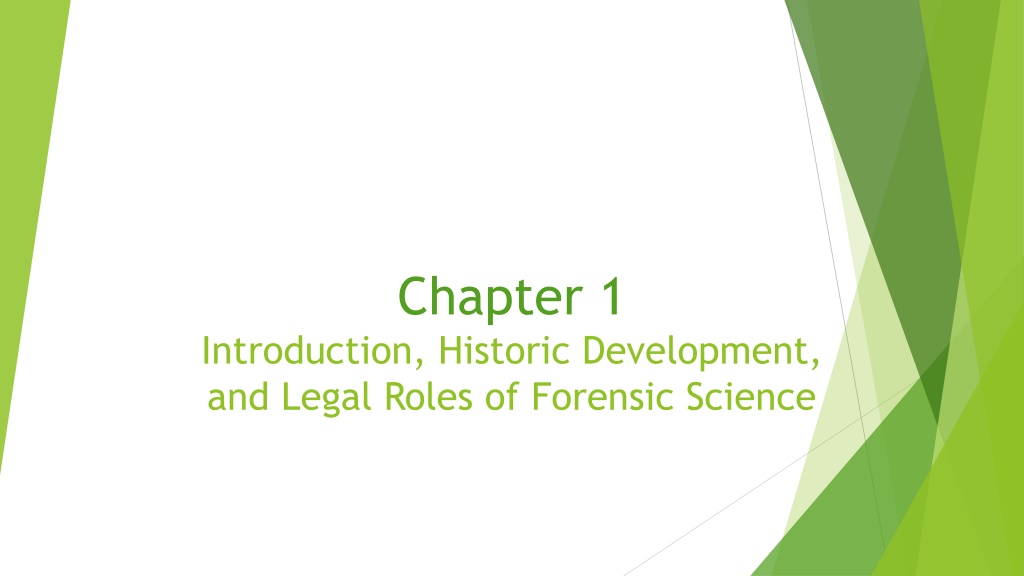

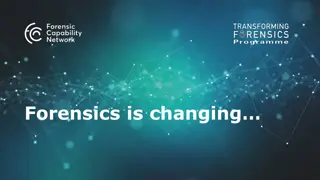
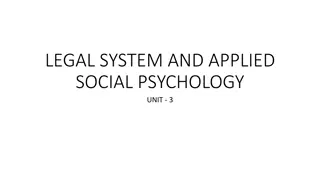

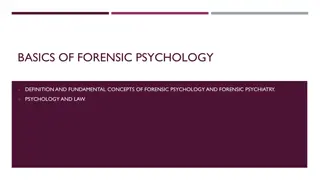
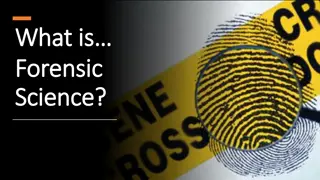
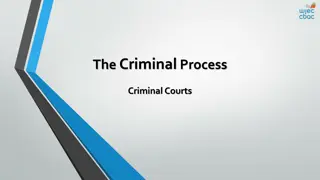
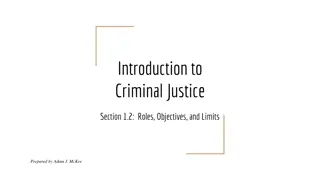

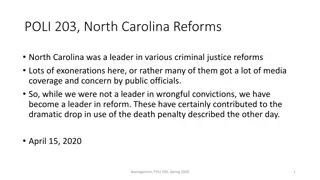
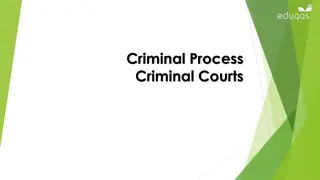
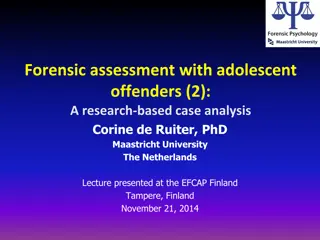




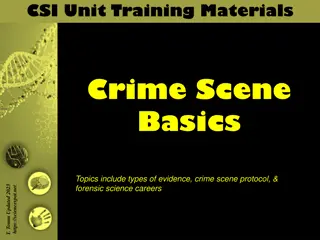
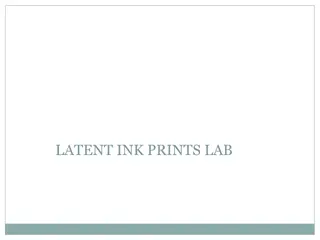
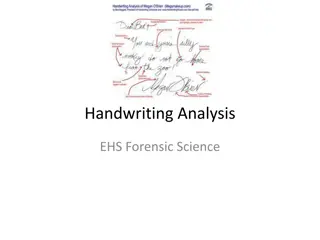
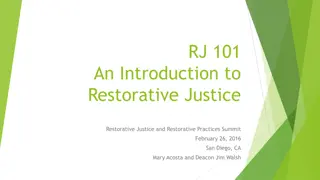
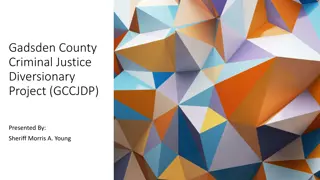
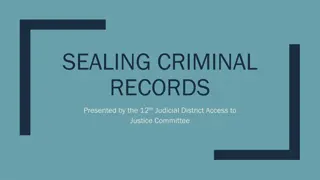

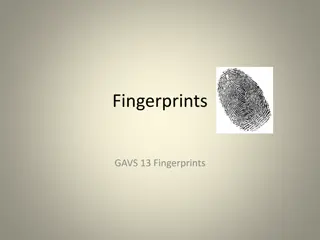
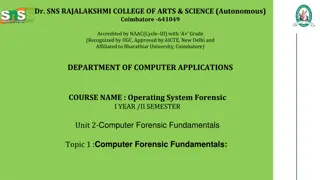
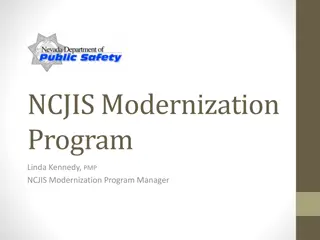
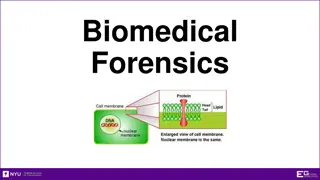

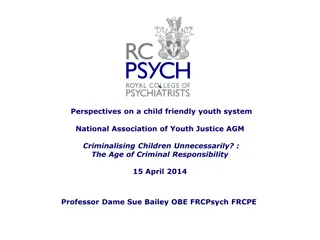
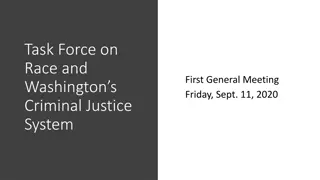
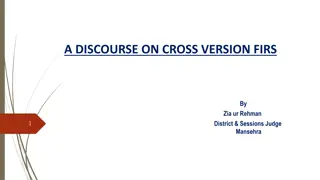
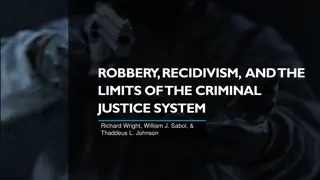
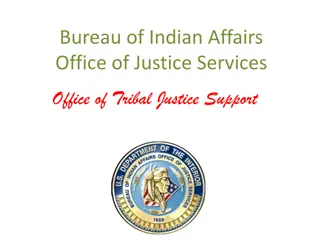

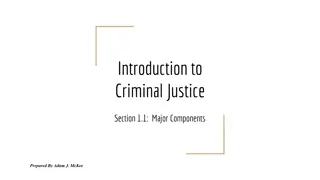
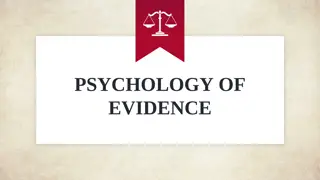


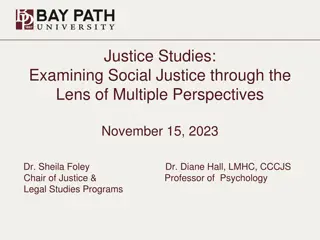
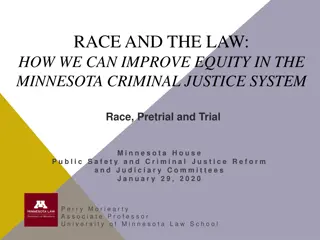

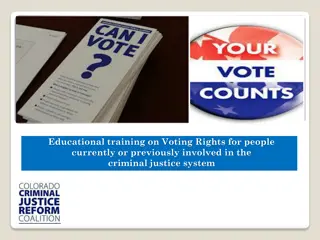
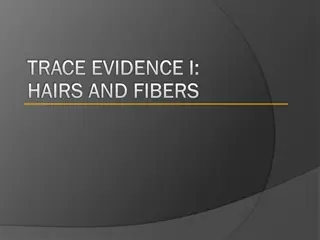
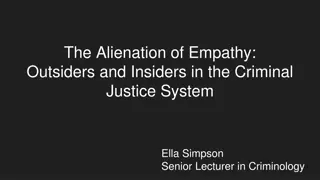

![Briefing on the Criminal Procedure Amendment Bill [B12-2021] to the Portfolio Committee on Justice and Correctional Services](/thumb/157093/briefing-on-the-criminal-procedure-amendment-bill-b12-2021-to-the-portfolio-committee-on-justice-and-correctional-services.jpg)
